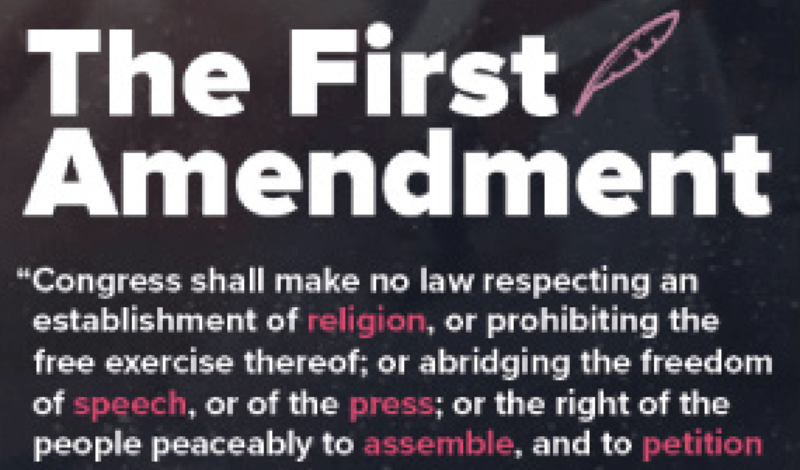
The First Amendment
This poster helps remind students of the five freedoms protected by the First Amendment.
Reasoned arguments based on facts and evidence are an important part of civic discourse. But what happens when missteps in logic undercut a belief or claim? What really counts as “evidence” in the digital age? Social media has made it easier than ever to share opinions, and it can feel overwhelming to sift through the many viewpoints on an issue or debate. Opinions can be well-researched and backed by evidence, but they can also exhibit faulty reasoning.
It’s important for students to recognize common red flags when it comes to evaluating arguments and evidence. Logical fallacies — types of faulty reasoning that render an argument questionable or invalid — often appear in opinions that seem to make a point but fall apart under scrutiny. This poster defines five common logical fallacies — ad hominem, slippery slope, false dilemma, straw man and false equivalence — and helps students become better equipped to assess diverse opinions as they develop their own well-reasoned positions on issues.
This poster is based on the lesson “Arguments & Evidence,” which is available through the News Literacy Project’s free Checkology® virtual classroom. Kimberley Strassel, who writes opinion pieces for The Wall Street Journal, guides students through this scenario-driven lesson. Students are invited to watch a debate unfold on social media over standardized testing and cell phone usage in schools. The engaging scenario challenges students to examine a flurry of opinions on a developing story as they work to recognize common logical fallacies in action. This lesson also encourages students to reflect on the role of social media in everyday life.
An essential component of a healthy democracy is discussing and debating the issues that affect both individuals and entire communities. Knowing how to spot faulty logic in civic discourse — on social media or elsewhere — can help empower students to better evaluate the many opinions they encounter each day.
This poster helps remind students of the five freedoms protected by the First Amendment.


From sporting events to breaking news, many stories compete for journalists’ attention.


This poster features five reasons that people fall for conspiracy theories.


Student voices are catalysts for positive change in schools and communities. You can empower them to be well-informed and


In this lesson, students use four key criteria to explore how journalists determine which events to cover.



